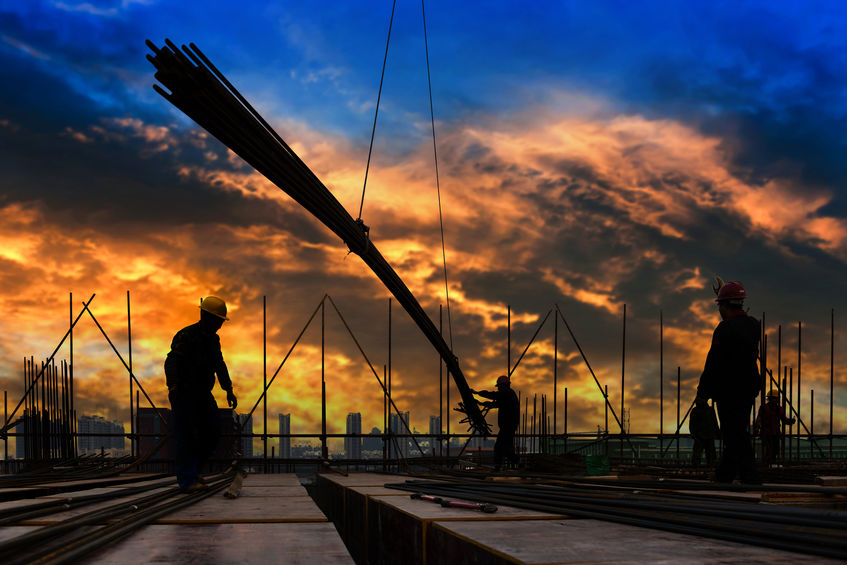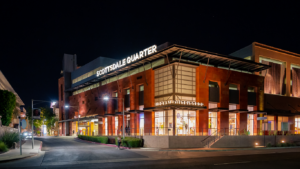Whether big or small, constructing a building is very time-consuming and hazardous, especially to the workers. Whether you are constructing a traditional or eco-friendly building, contractors need to ensure all their workers’ safety in the site to have a smooth and hassle-free operation.
There are many safety measures that should be observed in a construction site. But, let us focus on the most essential of all.
Here are 10 of the must-have safety precautions that should be present in a construction site.
Scaffolding
Have you seen buildings under construction and noticed the scaffolding around it? Scaffolding has several purposes, and one is safety. It ensures the worker’s safety at great heights. Aside from safety, it can also provide support for both the workers and the structure.
Scaffolding can help the workers access difficult areas of the structure. They can navigate around the building easily and can work together at the same time. It can give a stable platform for the workers to help them balance.
Edge Fall Protection
Edge fall protections keep the workers from falling during the building’s construction, especially if they need to reach dangerous areas where they are likely to fall, such as installing solar panels to a roof.
Fall protection ensures the workers for a safe and secure working environment. You can choose what type and check sizes of fall protection system you will need, whether it’s a fall arrest, positioning, retrieval, or suspension.
Proper Headgear
Objects and debris can fall anytime in a construction site, and wearing proper headgear is a must. A hard hat is the most common headgear used in a construction environment. It is classified into two types, which are Type I and Type II.
Type I hard hats are used to reduce the impact of objects from the top of the head, such as falling hammers and cement from above the construction area. The Type II hard hats can reduce the impact not only from the top of the head but also from the side like bumping your head on a sharp edge of a beam.
Aside from the two types of hard hats, it is also divided into three industrial classes: the Class G, Class E, and Class C. Class G hard hats, formerly called Class A, are used for general purposes that can also protect workers from low-voltage electrical conductors with up to 2,000 volts.
Class E, formerly referred to as the Class B hard hats, is designed for electrical work, protecting the worker from high-voltage electrical conductors with up to 20,000 volts. Meanwhile, the Class C hard hats don’t protect from electricity and are usually electrically conductive.
Safety Netting
Aside from scaffoldings, there is usually a mesh netting around a building that is under construction. These nets are installed to add an extra layer of protection for the workers. It is also used to avoid any construction materials from falling. Additionally, netting can also help control the spray of construction dust.
Foot Protection
Workers in a construction setting often use or are exposed to hard and heavy equipment and materials, which can result in a fall when mishandled. Aside from hard hats, safety shoes can also help you reduce these falling objects’ impact when they hit your feet.
All workers in the construction site should wear safety shoes to avoid any possible injuries. The type of safety shoes a worker must wear should be determined according to the worker’s nature of work and potential hazard.
The most recommended safety shoes are the one with a steel toe cap and a steel sole. A worker can use alternative materials, but the recommended will give more protection due to the steel covering. However, if the worker will be working on electrics, non-contractive shoes should be worn.
Protective Clothing
All construction workers should observe proper dress code when entering the construction site. Aside from hard hats and safety shoes, it is also vital to wear proper protective clothing. These clothing protect them from hazards caused by impacts, electricity, weather changes, and other construction risks.
Protection For The Eyes and Face
In construction work, workers are at risk of being exposed to many dangers, including eyes and hazards. The tasks of these workers are welders, machine operators, bar benders, and the likes. These kinds of tasks put the workers at a higher risk, so they need to be more protected.
Hand Protection
In addition to the already mentioned personal protective equipment is the hand protector. Workers in the construction industry are expected to handle objects with sharp edges, concrete, electricity, toxic chemicals, hot materials, and other hazardous construction equipment.
A worker must wear safety gloves according to what their tasks are. For instance, if the worker is handling sandblasting, chrome leather gloves should be worn. Electricians who are touching electricals must use a rubber glove to prevent electrocution.
Safety Harness
Safety harnesses should be provided to workers who operate in elevated places from two meters or more to protect them from falling. Anchorage point should be installed above the worker and should be five meters or more from the ground.
The anchorage point should be sturdy enough to carry 5000 pounds or more. The material used should be nylon with a thickness of one centimeter. You can use a material equivalent to nylon as long as it is strong enough to protect the worker.
Use Proper Ladders
Ladders are useful in construction but pose a hazard to the workers if the wrong ladder is used. It is crucial to choose the correct ladder for the job. For example, avoid using ladders that have metallic components on electrical works and near power lines.
Ladders also have different styles suitable for various jobs. There is a single-pole ladder that can reach up to 9 meters. Extension ladders can be used if the worker needs to reach higher areas up to 15 meters. Meanwhile, a step ladder can reach up to 6.1 meters, dual-purpose ladders, and a platform ladder.
Takeaway
Construction is such a dangerous job. A small miscalculation may result in massive accidents that can cause serious injuries, even death. In constructing a traditional building or an eco-friendly building, the risk is equal, and the safety precautions that should be observed are the same. The worker’s safety should be prioritized in managing a construction operation.




